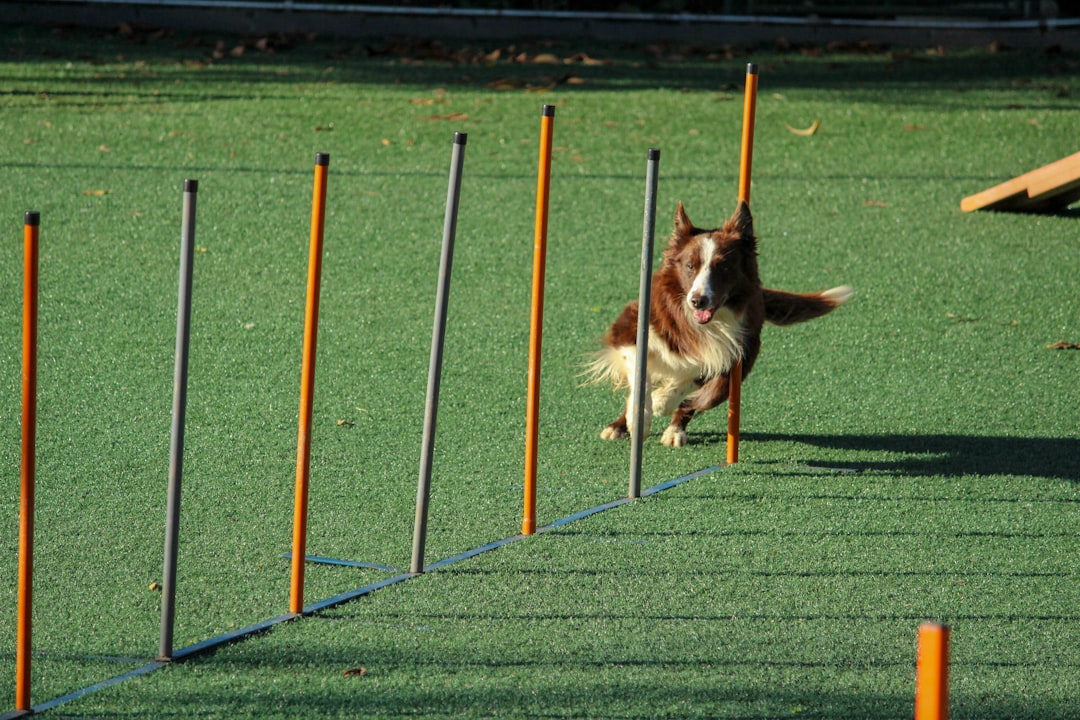A comparative analysis of clicker training versus traditional dog training methods, exploring the effectiveness, pros and cons, and real-world applications of each approach, to help dog owners make informed decisions about their training techniques.
Introduction to Clicker Training vs. Traditional Dog Training Methods
The evolution of dog training methods has been significantly influenced by advancements in our understanding of animal behavior and learning. Among these developments, clicker training stands out as a revolutionary approach, initially derived from techniques used in dolphin training by innovators such as Karen Pryor. This method has ignited a lively discussion within the dog training community, offering a fresh perspective that contrasts with more conventional methods. Clicker training’s foundation in behavioral science has introduced a new era of training that emphasizes positive reinforcement over punishment, marking a departure from traditional methods that often rely on dominance and correction.
The conversation surrounding the effectiveness of clicker training versus traditional dog training methods is more than just academic; it has practical implications for dog owners and trainers seeking the most humane and efficient ways to teach and bond with their dogs. By exploring the key differences and applications of these methods, individuals can make informed decisions on how to best train their canine companions. Embracing clicker training’s principles of positive reinforcement and clear communication can lead to a more rewarding and successful training experience for both dogs and their humans, highlighting the importance of choosing a training approach that aligns with modern understandings of animal behavior.
What is Clicker Training and How Does It Work?
Clicker training stands out as a modern and scientifically-backed approach to dog training, leveraging a small, handheld device that emits a clear, consistent clicking sound. This sound serves as a conditioned reinforcer or bridging stimulus, effectively bridging the gap between the desired behavior and the delivery of a reward. The clicker’s sharp sound is distinct enough to cut through ambient noise, capturing the dog’s attention and marking the precise moment a desired behavior is performed. This method is rooted in the principles of operant conditioning, specifically focusing on positive reinforcement to encourage desirable behaviors, while negative punishment may be employed to discourage unwanted ones. Unlike traditional methods that may rely on physical corrections or verbal reprimands, clicker training fosters a positive learning environment, promoting a bond of trust and understanding between the dog and trainer.
The functionality of clicker training extends beyond simple obedience commands. For instance, it is particularly effective in shaping complex behaviors or chains of actions that require precise timing to identify and reinforce. By clicking at the exact moment a desired behavior occurs, such as a dog touching a target with its nose or performing a specific trick, trainers can communicate with unparalleled clarity, significantly enhancing the training process. This method not only accelerates learning by providing immediate feedback but also enriches the training experience by making it more engaging and enjoyable for both the dog and the trainer. The effectiveness of this approach has been widely acknowledged, with many trainers successfully employing clicker training to teach a wide range of behaviors, from basic commands to intricate performance routines, thereby showcasing its versatility and efficacy in various training scenarios [3].
Pros and Cons of Clicker Training for Dogs
Clicker training stands out for its adaptability and effectiveness across a wide range of dogs, irrespective of their age, breed, or size, making it a universally applicable method in the canine world. This training technique excels in teaching complex behaviors and tricks with greater precision and speed than many traditional methods. The clicker acts as a clear, consistent signal to the dog that a desired behavior has been performed correctly, leading to faster learning and retention. This method is particularly advantageous for tasks that require a high level of accuracy, as it allows trainers to mark the exact moment a dog performs a desired action, thereby reinforcing the behavior more effectively.
However, while the benefits are significant, clicker training is not without its challenges. The success of this method relies heavily on the trainer’s consistency in using the clicker and correctly pairing it with rewards. There is also the risk of becoming too dependent on the clicker, potentially hindering a dog’s ability to obey commands when the clicker is not in use. This could lead to situations where the dog only performs behaviors when it knows a reward is immediately available, limiting the spontaneity and flexibility of obedience in varying circumstances. Despite these drawbacks, the positive reinforcement approach at the core of clicker training significantly enhances the relationship between the dog and the trainer. This method promotes a learning environment based on trust and positive reinforcement rather than punishment, fear, or dominance, thereby fostering a stronger bond and mutual respect between the trainer and the dog. To explore how clicker training can benefit your furry friend and strengthen your bond, visit Off Leash K9 Training of Detroit at https://dogtrainingmichigan.com/.
Traditional Dog Training Methods and Their Applications
Traditional dog training methods have a long history and include a variety of techniques designed to assert human dominance and control over a dog. These methods, such as leash corrections, alpha rolls, and the establishment of a clear hierarchy within the trainer-dog relationship, are predicated on the concept of the trainer as the “alpha” or pack leader. The underlying philosophy suggests that dogs, being descendants of wolves, naturally follow a social structure that respects and responds to a clear leader. This approach often employs aversives—actions or items that the dog will find unpleasant—like physical corrections, loud reprimands, or isolation to discourage undesirable behaviors. The rationale is that by associating negative outcomes with certain actions, dogs will be more likely to avoid these behaviors in the future. However, the use of aversives has been a point of contention, as it can potentially harm the dog’s emotional well-being and adversely affect the bond between the dog and its trainer.
Despite these concerns, traditional training methods have been applied successfully in certain contexts, particularly in situations requiring strict adherence to commands for safety or operational reasons, such as with working dogs in police or military roles. In these scenarios, the immediate and unequivocal response to commands can be crucial. Nevertheless, the emphasis on dominance and control contrasts sharply with the principles of positive reinforcement and mutual respect found in clicker training and other modern, science-based training methodologies. As understanding of canine psychology and behavior has evolved, so too have training approaches, with many trainers now advocating for methods that foster cooperation and communication between the dog and trainer, rather than relying on hierarchy and dominance as the foundation for the learning process. This evolution reflects a broader shift in the field towards training techniques that not only achieve behavioral objectives but also support the emotional health and well-being of the dog, reinforcing the bond between pet and owner.
Comparative Analysis: Effectiveness, Efficiency, and Long-Term Results
The debate between clicker training and traditional methods often centers on their effectiveness, efficiency, and the durability of the training outcomes. Clicker training, with its foundation in positive reinforcement and operant conditioning, has been documented to lead to better long-term retention of behaviors in dogs. This is particularly notable in studies that compare it to traditional training, which sometimes employs aversive techniques. Dogs trained with clickers tend to remember and perform learned behaviors more reliably over time, likely because the positive experiences associated with learning create a stronger, more lasting association. This aspect of clicker training not only enhances the efficiency of the learning process but also contributes to a more positive and trusting relationship between dogs and their owners.
Furthermore, the versatility of clicker training allows for its successful application across a wide range of behaviors and tasks, from basic obedience to complex tricks and service dog functions. It accommodates the individual temperaments and learning styles of different dogs, making it a highly adaptable method. For instance, a dog that may be timid or fearful in response to traditional correction-based methods could thrive under the clicker training approach, which reinforces desired behaviors without inducing stress or fear. This adaptability extends to various training goals, whether for household manners, competitive sports, or specialized tasks, demonstrating clicker training’s broad applicability. For dog owners seeking a method that is both effective in the short term and beneficial in the long run, clicker training offers a compelling option. Its effectiveness and efficiency in teaching and retaining behaviors make it a valuable tool in a dog trainer’s arsenal. For those interested in exploring these innovative training programs further, Off Leash K9 Training of Detroit provides a range of services that incorporate the latest in effective training techniques. Visit https://dogtrainingmichigan.com/ for more information on how to enhance your dog’s learning experience.
Success Stories and Real-World Applications of Training Methods
The world of dog training is rife with success stories that underscore the efficacy of clicker training, not only in remedying behavioral issues but also in propelling dogs to excel in performance sports and competitions. One notable example is the transformation of a once timorous rescue dog into a confident, agility competition winner through the adept application of clicker training techniques. This instance illustrates clicker training’s ability to not only correct unwanted behaviors but to also unlock a dog’s potential by fostering a positive learning environment. Such stories of transformation are not isolated; they are part of a broader narrative that champions the effectiveness of modern, science-based training methods.
In particular, Off Leash K9 Training of Detroit has compiled a wealth of testimonials from satisfied customers, each narrating a unique journey towards behavioral transformation and enhanced canine obedience. These accounts not only highlight the practical applications of clicker training in real-world scenarios but also demonstrate the complementary nature of blending clicker training with traditional methods. By tailoring training approaches to suit individual dog’s needs and learning styles, Off Leash K9 Training of Detroit effectively showcases the versatility and adaptability of clicker training in achieving remarkable training outcomes. Their success stories serve not only as a testament to the transformative power of modern training techniques but also as a beacon for pet owners navigating the complexities of dog training [customer product context]. For those intrigued by the potential of clicker training to change their dog’s behavior for the better, exploring the innovative programs offered by Off Leash K9 Training of Detroit is a promising step towards a well-trained and happy canine companion. Visit https://dogtrainingmichigan.com/ for more details on how to embark on this transformative journey.
Choosing the Right Training Method for Your Dog’s Needs
Selecting the most appropriate training method for your canine companion requires a deep understanding of their unique characteristics and needs. Every dog has its own set of motivations, temperament, and learning pace, making it crucial for owners to carefully assess these factors before embarking on a training regimen. For instance, a high-energy breed may respond better to the dynamic engagement that clicker training offers, utilizing its precise, reward-based system to channel their energy positively. Conversely, a dog with a more subdued personality might benefit from the structured boundaries provided by traditional training methods. Blending elements from both clicker and traditional training methodologies can create a customized approach, enhancing the training experience by addressing the specific requirements of each dog. This tailored strategy not only optimizes learning efficiency but also strengthens the bond between the dog and its owner, making the training process a rewarding journey for both.
The importance of ongoing evaluation and flexibility in training cannot be overstated. As dogs progress through their training, their responses to certain methods may evolve, necessitating adjustments to the approach. Regularly assessing the effectiveness of the training method and being open to change ensures that the training remains aligned with the dog’s development. This adaptive strategy helps in avoiding frustration and promotes a continuous learning environment where dogs can thrive. In essence, the goal is to foster a positive and enriching training experience that respects the dog’s individuality and promotes their well-being. For dog owners looking to embark on this rewarding journey, Off Leash K9 Training of Detroit offers innovative training programs tailored to meet the unique needs of every dog. With a team of experienced trainers, they provide the guidance needed to navigate the challenges of dog training, ensuring that your canine companion reaches their full potential. Discover more about their services and how they can help transform your training experience by visiting https://dogtrainingmichigan.com/.
Conclusion: Making Informed Training Decisions for Your Canine Companion
Navigating the world of dog training can seem daunting with the variety of methods available, but the contrast between clicker training and traditional methods offers a clear illustration of how diverse approaches can suit different canine learning styles and owner interactions. Clicker training, with its emphasis on positive reinforcement and precise behavior marking, stands in contrast to traditional methods that may incorporate more correction-based techniques. This distinction is crucial for owners to consider in light of their dog’s temperament, the specific training goals they have in mind, and their personal ethics regarding animal training. Off Leash K9 Training of Detroit understands these nuances and is dedicated to providing tailored training programs. By opting for a method that aligns with your dog’s individual needs and your training objectives, you’re setting the stage for a more effective and enjoyable learning experience for both you and your pet.
Selecting the right training approach is more than just a matter of preference—it’s about fostering a positive and lasting bond between you and your dog. Whether you’re drawn to the precision and engagement of clicker training or find value in the structured discipline of traditional methods, the ultimate goal is a well-behaved, confident, and happy dog. Off Leash K9 Training of Detroit excels in blending innovative techniques with proven methods to achieve remarkable results, regardless of age, breed, or behavior. For dog owners ready to make informed decisions about their canine companions’ training journey, exploring the comprehensive services offered by Off Leash K9 Training of Detroit is a promising start. Embark on this transformative journey by visiting https://dogtrainingmichigan.com/ to discover a tailored training program that will meet your needs and exceed your expectations.





